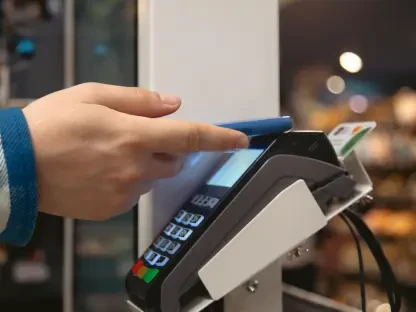Overview of Customer Loyalty in a Digital Age
In today’s fast-paced, digitally dominated market in Australia, customer loyalty is undergoing a profound transformation, with fleeting viral moments on social media often outweighing years of brand trust, presenting both challenges and opportunities for marketers. Recent research reveals a striking shift, as younger generations, particularly Gen Z, gravitate toward short-term, emotionally charged connections with trending products rather than enduring commitments to established names. This evolving dynamic requires brands to capture attention in an era where a single TikTok video can redefine consumer preferences overnight.
The landscape of loyalty is no longer defined solely by consistent quality or long-standing relationships. Instead, the rise of what has been termed ‘Trend Loyalty’—a temporary allegiance fueled by social media hype—has reshaped how brands must engage with their audiences. This phenomenon underscores the urgency for companies to adapt quickly to cultural shifts, leveraging real-time insights to remain relevant in a highly competitive environment.
Unpacking the Shift to Trend Loyalty
Defining the New Loyalty Paradigm
Trend Loyalty represents a departure from traditional ‘true loyalty,’ where consumers stuck with brands over decades due to reliability and trust. Now, allegiance often lasts only as long as the next viral moment, driven by platforms like TikTok and Instagram, where trends can ignite massive purchasing waves within hours. This shift is particularly evident among younger demographics, who prioritize immediacy and emotional resonance over historical brand value.
The decline in long-term loyalty poses significant implications for marketers who must now navigate a market where consumer attention is fragmented and fleeting. Brands face the task of not only capturing interest during a trend’s peak but also sustaining engagement once the initial excitement fades. This requires a deep understanding of digital ecosystems and the ability to pivot strategies at a moment’s notice.
Generational Differences in Consumer Behavior
Data highlights stark generational divides in how loyalty manifests, with Gen Z leading the charge in embracing Trend Loyalty. A notable 36% of this demographic admits to purchasing products purely because they trend on social media, a rate nearly double that of the broader population. Additionally, an equal percentage expresses loyalty to hyped brands, showcasing their susceptibility to viral influence.
In contrast, older generations tend to retain some affinity for traditional brand relationships, though even they are not immune to the allure of social media-driven trends. This generational split suggests that marketing approaches must be tailored to specific audience segments, balancing innovative, trend-focused campaigns for younger consumers with more conventional trust-building tactics for others.
Data-Driven Insights into Consumer Trends
Social Media’s Role in Shaping Decisions
Social media platforms have become pivotal in influencing purchasing behavior, often surpassing traditional advertising channels in impact. Research indicates that 14% of consumers trust products more when they go viral, while 13% value insights from TikTok and similar platforms over conventional ads or brand websites. Furthermore, 16% have made purchases based on influencer endorsements, illustrating the power of digital personalities in driving sales.
The immediacy of social media amplifies its effect, as trends can spread globally within days, creating sudden spikes in demand. Brands that fail to monitor or engage with these platforms risk missing out on critical opportunities to connect with their audience during these high-impact moments.
Statistical Snapshot of Loyalty Preferences
Beyond platform influence, consumer preferences reveal a broader shift, with 51% pledging loyalty to specific products rather than overarching brand identities. Among Gen Z, the stakes are even higher, as 26% will abandon a brand if a hyped product fails to deliver on expectations. These figures underscore the precarious nature of Trend Loyalty, where satisfaction must be immediate and tangible.
Looking ahead, the influence of social media and influencer culture is expected to grow, potentially deepening the reliance on viral moments for brand relevance. This trajectory suggests that adaptability and real-time engagement will become non-negotiable for companies aiming to maintain a foothold in the market over the coming years.
Challenges of Adapting to Fleeting Trends
The Pressure of Rapid Response
Navigating Trend Loyalty presents unique hurdles, as brands must react swiftly to capitalize on viral moments before they dissipate. The short lifespan of these trends means that hesitation can result in missed opportunities, leaving companies struggling to regain consumer interest once the hype subsides. This pressure to act fast often strains internal processes, requiring agile decision-making frameworks.
Moreover, the emotional basis of Trend Loyalty heightens consumer expectations, with disappointment in a trending product potentially tarnishing a brand’s reputation overnight. Striking a balance between speed and quality becomes paramount, as rushed responses can lead to subpar offerings that alienate rather than attract customers.
Turning Hype into Sustained Engagement
One viable solution lies in harnessing technology and data analytics to transform momentary interest into lasting connections. By leveraging insights into consumer behavior, brands can tailor follow-up interactions that maintain relevance beyond the initial viral surge. However, this must be paired with authenticity, as overly calculated efforts risk appearing disingenuous and further eroding trust.
Technology as a Tool for Personalization
AI and Automation in Real-Time Engagement
Artificial intelligence and automation stand out as critical tools for addressing the demands of Trend Loyalty, enabling brands to deliver personalized experiences at scale. These technologies facilitate real-time analysis of consumer data, allowing for tailored marketing messages that resonate on an individual level. Such precision helps bridge the gap between transient hype and enduring relationships.
A compelling example comes from PUMA, a sportswear giant that has successfully utilized AI-driven solutions to analyze first-party data. By crafting personalized customer journeys across various touchpoints, both online and offline, the brand demonstrates how technology can keep pace with rapid trend cycles while fostering deeper connections.
Understanding Emotional Drivers
Beyond technical capabilities, success hinges on grasping the emotional motivations behind consumer choices. Personalized interactions must address individual needs and desires, creating a sense of being understood that transcends fleeting trends. This emotional intelligence, supported by data, forms the foundation for loyalty that persists even as social media landscapes evolve.
Broader Perspectives on Loyalty Dynamics
Insights from Business-to-Business Contexts
While consumer trends dominate much of the loyalty discussion, the business-to-business (B2B) sphere offers complementary insights through recent studies on buyer behavior. Loyalty in this arena often mirrors consumer patterns, with an emphasis on consistent value delivery across interactions. However, the stakes can differ, as B2B relationships typically involve longer-term commitments and higher financial investments.
The parallels between consumer and B2B loyalty highlight a universal truth: the need to provide experiences that stakeholders would miss if absent. This principle, championed by experts in the field, suggests that loyalty strategies must prioritize meaningful engagement, whether targeting individual shoppers or corporate partners.
Applying Universal Loyalty Principles
Integrating these broader lessons into marketing approaches can enhance outcomes across sectors. For consumer-focused brands, adopting a value-driven mindset akin to B2B practices can strengthen trust over time. Conversely, B2B entities can benefit from consumer-inspired tactics like real-time responsiveness, ensuring they remain competitive in a dynamic marketplace.
Future Directions for Brand Loyalty
Evolving Cultural and Technological Influences
As cultural shifts and technological advancements continue to shape the loyalty landscape, brands must anticipate further changes driven by social media’s expanding reach. Emerging platforms and formats will likely introduce new ways for trends to capture consumer imagination, necessitating ongoing vigilance and innovation from marketers.
Opportunities abound for those willing to embrace AI-driven personalization, creating unified experiences that resonate deeply with diverse audiences. Such strategies can help bridge generational divides, ensuring relevance across demographics while capitalizing on the viral potential of digital channels.
Prioritizing Speed and Relevance
Ultimately, the future of loyalty will reward speed, relevance, and adaptability. Marketing strategies must evolve to deliver instant, impactful interactions that align with current consumer sentiments. Staying ahead of the curve will require continuous investment in technology and a commitment to understanding the ever-changing drivers of customer behavior.
Reflecting on the Loyalty Evolution
Looking back, the transformation from steadfast brand allegiance to the transient nature of Trend Loyalty marked a pivotal moment for marketers navigating Australia’s competitive landscape. The insights gained from analyzing consumer behavior underscored the critical role of social media in shaping purchasing decisions, particularly among younger demographics. This shift challenged conventional approaches, pushing brands to rethink engagement in a world of viral immediacy.
The path forward demanded actionable steps, such as integrating AI and real-time data analytics to seize short-lived trends while laying the groundwork for sustained relationships. Brands were urged to explore innovative partnerships with influencers and invest in agile frameworks that could pivot with cultural tides. These strategies offered a blueprint for balancing the ephemeral with the enduring, ensuring relevance in an era defined by influence.
Moreover, the broader lessons from both consumer and business contexts highlighted the universal importance of value and personalization in fostering loyalty. As companies moved into the next phase, the focus shifted to building adaptive cultures that prioritized customer-centric innovation. This mindset promised not just survival but thriving amidst the unpredictable waves of digital trends.









